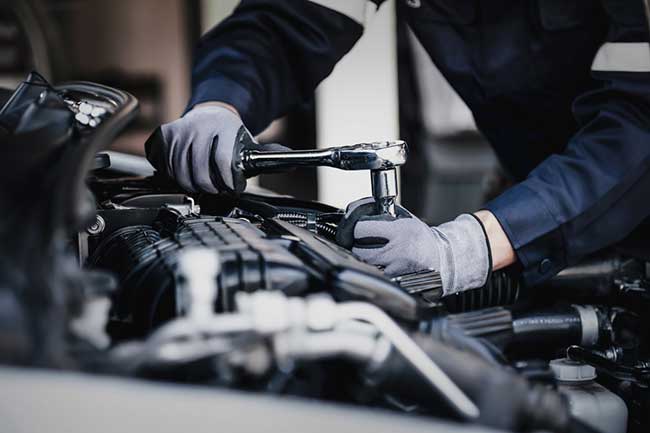All Categories
Featured

Couple of things are a lot more worrying for a driver than the unexpected lighting of the check engine light (CEL) on the dashboard. While it may cause instant worry, comprehending what this light represents can encourage you to take care of the scenario efficiently. Allow's discover the possible reasons behind the CEL and the steps to solve it.
What Does the Check Engine Light Mean? The CEL becomes part of your car's onboard diagnostics (OBD) system. It checks a selection of systems within the car, consisting of emissions, fuel effectiveness, and overall engine performance. When the system detects a fault or abnormality, it sets off the CEL to alert the chauffeur.
Strong Light: Suggests a non-critical issue, such as a small sensing unit malfunction. It still needs focus to stay clear of long-term damages. Blinking Light: Signals a serious issue, like an engine misfire, that requires instant interest to avoid significant damage. Common Reasons for the Check Engine Light. Below are several of the most regular reasons of a CEL, varying from basic to intricate:
Loose Gas Cap:

A loose or broken gas cap can disrupt the gas system, triggering the light. This is just one of the most convenient concerns to deal with-- merely tighten up or replace the cap. Oxygen Sensor Failing:
The oxygen sensor determines the air-to-fuel ratio for optimal combustion. A faulty sensor can cause minimized fuel performance and greater emissions. Trigger Plug or Ignition Coil Problems:
These elements are essential for the combustion process. Damaged spark plugs or malfunctioning coils can trigger misfires and rough engine performance. Catalytic Converter Problems:
This component minimizes harmful exhausts from your automobile. Failing to deal with other engine problems can lead to catalytic converter damage. Mass Air Movement (MAF) Sensor Failing:
The MAF sensor guarantees the best amount of air blends with gas. A filthy or falling short MAF sensing unit can reduce power and gas effectiveness. Steps to Take When the CEL Begins. Don't Panic:
Take a moment to observe your vehicle's performance. Is it driving normally, or exist signs and symptoms like decreased power or strange noises? Examine the Gas Cap:
If required,Tighten up or reseat it. This straightforward solution settles lots of CEL circumstances. Make Use Of an OBD-II Scanner:
Connecting in a scanner gives certain problem codes that determine the trouble. Numerous vehicle components shops use this solution completely free. Check out a Technician if Essential:
If the CEL continues to be on or flashes, have an expert inspect your automobile. Postponing repair services might lead to more expensive fixes. Preventative Steps to Stay Clear Of CEL Issues. Routine Upkeep:. Adhere to the producer's schedule for oil adjustments, trigger plug replacements, and air filter cleansing. Examine Secret Elements:. Regularly examine your gas cap, belts, and tubes for wear or damages. Usage Quality Fuel and Oil:. Premium products can stop residue buildup that may influence sensors and engine parts. Why You Must Address the CEL Without Delay. While it's alluring to neglect a solid CEL, procrastination can cause extreme repercussions. What begins as a minor concern-- like a loose gas cap-- might evolve right into costly repairs. Resolving the light very early ensures your lorry continues to be effective and safe.
Conclusion. The check engine light is not a cause for prompt panic, but it must never ever be disregarded. Comprehending its objective and possible triggers outfits you to make educated choices, whether it's a fast gas cap adjustment or a journey to your technician. With appropriate maintenance and prompt activity, you can maintain your automobile running efficiently and avoid unneeded repair services.
Latest Posts
Don’t Miss Special Auto Repair Specials in Chicago at Montclare Auto Repair
Published en
1 min read
Why Regular Vehicle Maintenance at Montclare Auto Repair Reduces Costs
Published en
1 min read
Understanding Roof Covering Warranties: What Homeowners Ought To Know
Published en
1 min read
More
Latest Posts
Don’t Miss Special Auto Repair Specials in Chicago at Montclare Auto Repair
Published May 29, 25
1 min read
Why Regular Vehicle Maintenance at Montclare Auto Repair Reduces Costs
Published May 27, 25
1 min read
Understanding Roof Covering Warranties: What Homeowners Ought To Know
Published May 25, 25
1 min read